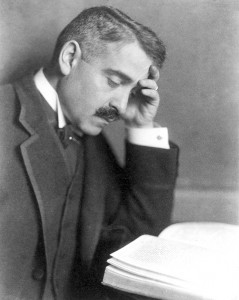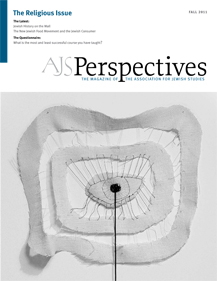
Once these thoughts started percolating, it was hard not to think that primordial mythic structures might continue as living cultural elements in totally different religious environments—erupting from their subsurface channels into biblical similes and rabbinic metaphors. That is, I came to realize that a textual surface may conceal deeper dimensions, and one should be ready to plumb their hidden reserves through the nuances of a casual comment (as with Isaiah) or a more deliberate act of exegesis (as with Rav Judah). But this process is also problematic because one is only alerted to these possibilities on the basis of analogies in other sources (in this instance, a pagan myth). That is, we only know by means of the known—and this requires caution and care.
My second event, this time pictorial in form, reinforced these musings. I remember being struck by a fragmentary ancient Egyptian depiction of 'Ammon Re in Procession.' Enough was still visible to make this characterization— for there they were: gods and king, and a gallery of servants and polymorphic figures all bearing their offerings. But if there were traces galore, the gaps left much to the imagination. And this, too, set me wondering about how one constructs a religious 'Gestalt' so that the unknown may be inferred from the known, and the portions in one zone of meaning could be coordinated with details found elsewhere. Once again, the issue was only apparently a matter of 'reading' the surface features of a phenomenon, and had more to do with construing its imagined depth. The challenge was to perceive in a given artifact's inherent form and vitality—not intuitions projected from contemporary scholarship and based on vestigial evidence.
The two happenings were thus different yet similar, and have brewed within all these years—inspiring me to seek the unseen in the visible and the unsaid in the said. Everything depends upon imagination and intuition. But since this includes discerning the evidence as well, a careful methodology, constantly revised, is required to keep one's perceptions under control.
All these thoughts came to mind once again upon re-reading Aby Warburg's 1923 lecture on Images from the Region of the Pueblo Indians of North America. Warburg had collected his data a quarter century earlier, on an expedition to the American Southwest, but was motivated to present it before the inmates and doctors of the Bellevue sanatorium in Kreuzlingen, Switzerland, in an effort to prove his sanity and inaugurate his dismissal. It is a stunning performance, replete with the powerful intuitions and methodological controls that made him a path breaking analyst of Renaissance art. In many marvelous works, Warburg deftly disclosed the layers of culture and mind embedded in the symbolism of Florentine paintings—in particular, the great depths of the religious imagination revealed by the conjunction of old pagan myths with later cultural figures. It was the entwining of the two, as well as the transformed meaning of ancient myths in their latter-day recrudescence that was so arresting. Each instance was an event in its own right, showing the cultural vitality of primordial forms.
And just this was the burden of Warburg's lecture on the Pueblo snake rituals. The very assemblage of the artifacts and their analysis is nothing less than an archeology of the religious imagination—showing, through a series of disparate images on the ancient serpent, a kind of palimpsest of mental layers, where the oldest ones (the most raw and coiled features of the ever-mysterious serpent) remained active and resurfaced in new configurations. Warburg's major concern, as he explicitly admits, was to reveal the primordial strata of the human imagination and challenge the 'myth of rational progress.' Like the serpent, our minds molt and grow new skin— but (apparently) never wholly transcend their deep, terrestrial embodiments.
In the course of his work, Warburg came to call these creative images Pathosformeln, formulae of feelings—these being the rich vocabulary (of images and words) that gives expression to deeper sensibilities and emotions. They provide the evidence of depth pathos. The interpreter must learn how to 'read' them properly, in order to penetrate their deep grammar and intuit their diverse configurations. I am compelled by these insights, and believe their value extends beyond the world of pictorial art. In fact, I think they may help one think better about some of the issues mentioned at the outset. Following Warburg's lead, we may thus regard each mythic element as a symbolic form expressing (in dramatic and personified images) deeper intuitions, feelings, and insights—whether of nature, or theology, or the very order of things.
All these mythic forms, then, can be seen as Pathosformeln—each instance encoding depths of feeling about existence, variously amenable to our understanding in proportion to our knowledge. The thicker the evidence, the more resonant the soundings; and the more judicious the analogies, the more justified the intuitions. Each expression is an outcropping of subsurface elements, allowing the interpreter to follow the vein of ore to its source; and each one must be examined in its own right.
On this basis, I wish to say a bit more about penetrating the depths of the Jewish religious imagination encoded in texts. Many of these sources (both legal and theological) are the result of editing and stylization, which have transformed oral components into written ones and elided diverse elements into compact units. As a result, the textual yield is compressed and elliptical; and this makes their interpretation difficult and emotional valence elusive. Nevertheless, there is one element that gives some access to the generating pathos informing our sources—and this is the exegetical act itself, including the addition of proof texts from Scripture.
We already had a hint of this in the rabbinic tradition about rain credited to Rav Judah, where the sage's comment (that "rain is the ba'al of the soil") was supplemented by a biblical citation conveying a vivid explanation of the fructification of rain through images of gestation and birth. In a sense, Rav Judah layers his own explanation in the soil of Scripture and gives roots thereby to his bold image. Both the initial statement and the secondary proof text are Pathosformeln, offering cues to the cultural realities at their core. Indeed, through them we sense that the legal metaphor in our Mishnah is not only derived from a living sensibility, somehow continuous with ancient Canaanite strata, but still retained imaginative depth in some rabbinic circles. Unexpectedly, new traces of their thoughtworld are disclosed.
But we can plumb deeper precisely where the act of exegesis transforms the sense of the text. Consider the following rabbinic myth, created whole cloth from the texture of Scripture. In place of a biblical depiction of divine wrath, which states that God "withdrew his right hand from before (mipnei) the (besieging) enemy" (Lam. 2:3), thereby allowing them to enter the city unchallenged, the sages introduce a stunning image of sympathetic suffering. Reading against the grain, and turning the text upside down, one Midrash has God say that he will identify with Israel "because of (mipnei) what the enemy" has done to his people; and just as their arms were bound behind them as captured exiles, so would he likewise put his arm behind him and share their fate.
Radical exegesis has thus transformed a text of punishment into one of sympathetic care. But it is the prior human pathos which evoked it that deserves special comment. Troubled by Scripture's personification of divine wrath, a belief in God's exilic care has revised the original metaphor. It thus behooves us to perceive within the external images their underlying sensibility.
Just as the biblical instance must be read as an emotive metaphor of abandonment and punishment, so must the rabbinic image be seen for the divine sympathy it projects. In both cases, bodily metaphors are occasions for theological emoting: the sense of punishment is conveyed by the passive-aggressive image of a withdrawn hand; and the longing for comfort elicits a counterimage of compassionate identification. Understanding this, we may plumb the images to their initiating pathos; and by this act of controlled intuition be guided toward the wellspring of their creative surge.
***
Faced with certain topics, we are often stymied by surface sediments. Take the case of the small stone called shetiyah—reported in the Mishnah (Yoma 5:2) to have been in the Temple since earliest times, and to have been used to hold the incense pan during the Yom Kippur ritual in the second Temple (replacing the lost ark!). What might the priests and sages have thought about this stone, at the center of the most sacred site? Did they have in mind myths like those reported in the Talmud about a stone from which the world was established, even cast by God himself into the primeval water, according to R. Isaac Napaha? Similar myths are well- known, both early and late, and recorded in both traditional and more marginal sources. In them this stone was also said to have stopped up the ancient Tehom—surging up like Tiamat of yore. What does all this mean? Can we put a spade to this shetiyah-stone and unearth a myth of world origins, upon whose midpoint the Temple stood? And we may wonder: did oral subsurface traditions only burst forth at later times, spewing a plethora of latent motifs into fuller legends; or were these formulations generated by the terse reference in our Mishnah? Faced with such imponderables, one may be reluctant to explain the known by the unknown or fill-in the Gestalt on one's own.
Pondering Pathosformeln leads to other cultural considerations of a related kind. Simply to know the manifest content of a given statement, and describe its external form, is to remain on its surface level of knowledge—or noema; and this is a far cry from understanding its inner core of meaning and belief-structure—or pisteuma. I mention these two terms and this polarity because Raimon Panikkar once used them to discuss the difference between knowing an "other religion and intuiting its most intimate convictions." He added that this complication affects inter-religious dialogue, as well, since we tend to re-formulate our private beliefs in terms of public knowledge. That is, we construct a discourse of rational information and so translate our religious pathos into external expressions. Only through sustained dialogue and attentive sympathy may one possibly penetrate these formulations—because people talk back and may clarify misinterpretations. But our texts do not answer, as Plato once famously said. And so, we interpreters of religious ideas must keep at it, ever hoping to crack the code. But what would confirm that we have hit home?

